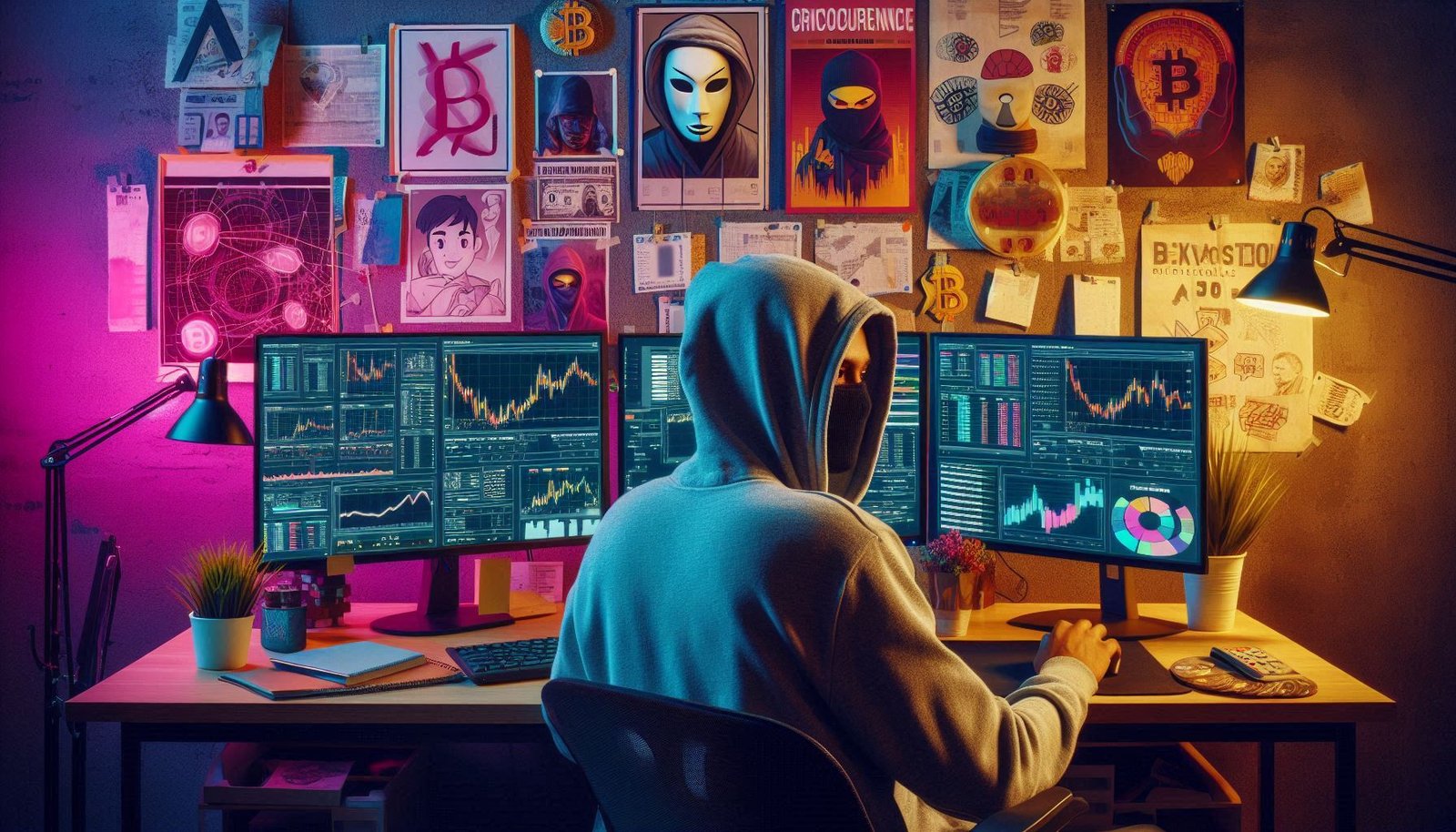It’s probably no surprise that I do not wish to show my face on my videos. This may change in the future, but for now it will be voice only. There are definitely some dangers of being publicly identified (aka ‘doxxed’), so you might find this information useful…
Being a doxxed (publicly identified) crypto YouTuber can be exciting but comes with real risks. Let’s explore those dangers:
- Security Risks:
- Target for Hacks: If hackers know your identity, they might target you for phishing attacks or hacking attempts, especially if they think you hold significant crypto assets.
- Physical Safety: In extreme cases, knowing your identity could expose you to physical threats or extortion, especially in countries where crypto ownership could attract the wrong kind of attention.
- Privacy Concerns:
- Personal Details Exposure: Doxxing can expose your home address, family members, and other sensitive information, making you and your loved ones vulnerable.
- Unwanted Attention: You might receive a flood of messages, some supportive, others intrusive or harassing.
- Regulatory Scrutiny:
- Tax Authorities: If you’re sharing trading profits or promoting crypto projects, tax authorities might scrutinize your activities more closely.
- Legal Issues: Promoting certain projects could bring legal trouble, especially if those projects turn out to be scams or violate securities laws.
- Reputational Risks:
- Association with Scams: In the fast-moving world of crypto, projects can go sour quickly. Even if you promote something in good faith, your reputation could be damaged if things go wrong.
- Backlash from Community: Crypto can be tribal, and if you take a stance people disagree with or make a mistake, backlash can be harsh and public.
- Emotional Toll:
- Online Harassment: Trolls and haters might target you, and constant criticism or harassment can take a mental toll.
- Pressure to Perform: There can be immense pressure to keep up with the latest news, projects, and trends to maintain an audience.
So, what can be done to mitigate these risks?
- Use Strong Security Measures: Enable 2FA, use hardware wallets for crypto storage, and be cautious with links and downloads.
- Protect Your Personal Information: Don’t share more than necessary. Consider using a P.O. box or business address instead of your home address.
- Legal & Tax Advice: Work with professionals who understand crypto to navigate the complex regulatory landscape.
- Be Transparent & Ethical: Make sure any promotions are genuine, researched, and disclosed. Maintaining integrity can protect your reputation.
- Mental Health Check-Ins: Stay grounded and make sure to take breaks. Having a support system (friends, family, other creators) can be a big help.
So should a Crypto YouTuber show his face on video if he wants to keep some anonymity??
If a YouTuber wants to maintain some level of anonymity while still building trust with an audience, showing their face on camera can be a double-edged sword. Here are some pros and cons, along with alternative solutions:
✅ Pros of Showing Your Face
- Builds Trust & Engagement – Audiences connect better with a real person rather than just a voice.
- Boosts Credibility – People are less likely to think you’re running a scam if they can see you.
- Better Branding Opportunities – Having a recognizable face makes it easier to grow a personal brand and get sponsorships.
❌ Cons of Showing Your Face
- Easier to Get Doxxed – Once your face is out there, it becomes easier for people to link your identity to personal info.
- Security Risks – If you become successful, you could become a target for hacking, scams, or even real-world threats.
- Privacy Loss – Your personal life might get mixed with your online presence, which can be stressful.
🔥 Best Alternatives for Staying Anonymous While Creating Content
If you want to balance privacy with engagement, here are some workarounds:
🎭 1. Use a Virtual Avatar or VTuber Setup
- Many crypto YouTubers are using VTuber-style avatars to keep their anonymity while still showing expressions and personality.
- Tools like FaceRig, VSeeFace, or Animaze allow you to map your facial expressions to an animated character.
- If you want a crypto-themed AI avatar, you can also try Synthesia.io to create deepfake-style talking head videos.
🖼 2. Use On-Screen Graphics & Voiceovers Instead of Face Cam
- Instead of showing your face, use infographics, animations, and charts to keep people engaged.
- Channels like “ColdFusion” and “Andrei Jikh” (early videos) used this method before revealing their faces.
👨🎤 3. Blur or Partially Hide Your Face
- You could wear a mask, sunglasses, or a hoodie (think “Anonymous” style).
- Some YouTubers use low lighting or filters to obscure their full appearance.
- Example: The YouTuber “Lark Davis” started out using sunglasses and a hat to keep some mystery.
🔊 4. Go Full Voice-Only Mode
- If you’re a great storyteller, you can go full audio-only, like a podcast format with dynamic visuals.
- Many crypto influencers have grown big using just voiceovers and AI-generated visuals.
🎯 Final Verdict: Show Your Face or Not?
If your goal is maximum privacy, it’s better to avoid showing your face and instead use an avatar or voice-only format. However, if you want to build long-term audience trust, showing your face (even partially) might help as long as you take security measures (e.g., no personal background in videos, use aliases, and avoid revealing home/work locations).
If you have any comments about this, please let me know 🚀

